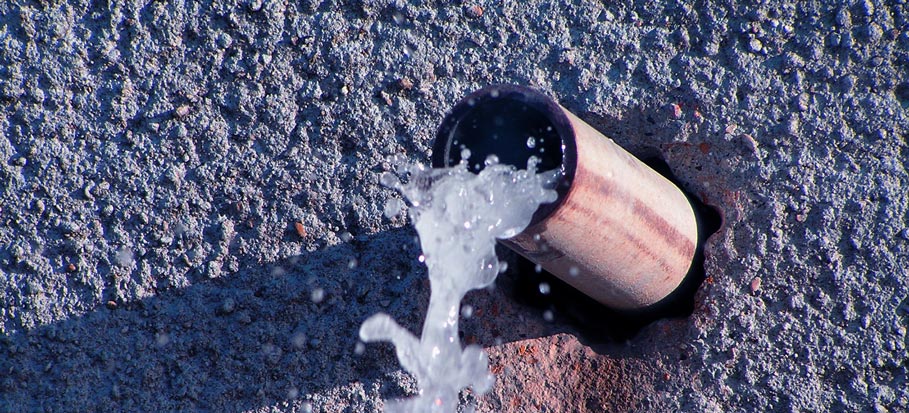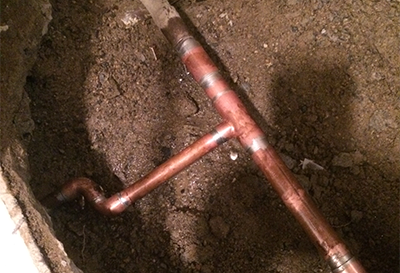Just how to Examine If Your House Has a Concealed Leakage
Just how to Examine If Your House Has a Concealed Leakage
Blog Article
How do you really feel about Hacks to detect leaks?

Early detection of leaking water lines can alleviate a prospective disaster. Apart from conserving you cash, it will certainly reduce the irritation and also frustration. The minute you discover a leak, calling your plumber for repairs is the very best solution. Some little water leakages may not be visible. If you can not detect it with your nude eyes, below are some hacks that aid.
1. Take A Look At the Water Meter
Every house has a water meter. Checking it is a proven manner in which aids you discover leaks. For beginners, switch off all the water resources. Make sure nobody will certainly flush, make use of the faucet, shower, run the cleaning maker or dishwashing machine. From there, go to the meter as well as watch if it will certainly change. Since no one is using it, there ought to be no movements. That indicates a fast-moving leakage if it moves. Furthermore, if you discover no changes, wait an hour or two as well as inspect back again. This means you might have a slow leakage that could even be below ground.
2. Check Water Consumption
Analyze your water bills and also track your water intake. As the one paying it, you need to notice if there are any kind of discrepancies. If you find sudden changes, despite your intake coinciding, it indicates that you have leaks in your plumbing system. Keep in mind, your water costs should drop under the same variety monthly. An abrupt spike in your expense indicates a fast-moving leakage.
A constant boost every month, also with the exact same practices, shows you have a slow-moving leak that's also slowly rising. Call a plumber to extensively examine your residential property, particularly if you really feel a cozy location on your floor with piping beneath.
3. Do a Food Coloring Test
30% comes from toilets when it comes to water usage. Examination to see if they are running effectively. Drop flecks of food color in the storage tank and wait 10 minutes. There's a leak between the storage tank and bowl if the color in some way infiltrates your dish during that time without flushing.
4. Asses Exterior Lines
Don't fail to remember to inspect your outdoor water lines as well. Test spigots by connecting a garden hose pipe. Should water seep out of the link, you have a loosened rubber gasket. Change this and make sure all connections are tight. If you have actually obtained an automatic sprinkler, it will aid get it skillfully examined and also preserved every year. One little leakage can throw away lots of water and also increase your water costs.
5. Check as well as Evaluate the Circumstance
Homeowners ought to make it a practice to inspect under the sink counters as well as also inside cabinets for any type of bad odor or mold growth. These two warnings indicate a leak so punctual interest is called for. Doing routine examinations, even bi-annually, can conserve you from a significant problem.
Examine for discolorations and also deteriorating as most devices and pipelines have a life expectancy. If you think dripping water lines in your plumbing system, don't wait for it to intensify.
Early discovery of dripping water lines can reduce a prospective calamity. Some tiny water leaks may not be noticeable. Examining it is a proven way that helps you discover leaks. One tiny leak can waste tons of water and also increase your water costs.
If you presume leaking water lines in your plumbing system, don't wait for it to rise.
WARNING SIGNS OF WATER LEAKAGE BEHIND THE WALL
PERSISTENT MUSTY ODORS
As water slowly drips from a leaky pipe inside the wall, flooring and sheetrock stay damp and develop an odor similar to wet cardboard. It generates a musty smell that can help you find hidden leaks.
MOLD IN UNUSUAL AREAS
Mold usually grows in wet areas like kitchens, baths and laundry rooms. If you spot the stuff on walls or baseboards in other rooms of the house, it’s a good indicator of undetected water leaks.
STAINS THAT GROW
When mold thrives around a leaky pipe, it sometimes takes hold on the inside surface of the affected wall. A growing stain on otherwise clean sheetrock is often your sign of a hidden plumbing problem.
PEELING OR BUBBLING WALLPAPER / PAINT
This clue is easy to miss in rooms that don’t get much use. When you see wallpaper separating along seams or paint bubbling or flaking off the wall, blame sheetrock that stays wet because of an undetected leak.
BUCKLED CEILINGS AND STAINED FLOORS
If ceilings or floors in bathrooms, kitchens or laundry areas develop structural problems, don’t rule out constant damp inside the walls. Wet sheetrock can affect adjacent framing, flooring and ceilings.
https://www.servicemasterbyzaba.com/blog/how-to-detect-water-leakage-in-walls/

Do you like reading about Top leak detection hacks? Give a remark below. We would be interested to know your suggestions about this posting. We are looking forward to see you back again soon. Do you know about somebody who is inquisitive about the subject? Do not hesitate to share it. We value reading our article about Leaking water lines.
Report this page